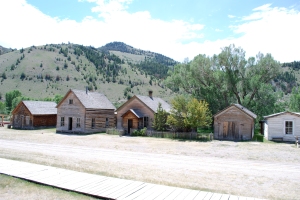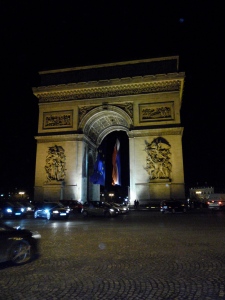GOYA Y EL MUNDO MODERNO
Francisco de Goya es probablamente el nombre más conocido en el mundo del arte después de Picasso. Goya, un pintor y grabador español que vivió entre los años 1746 y 1828, pintó algunas de las obras más famosas de la historia de la pintura española y también se convirtió en la voz de la gente durante la sangrienta guerra de la Independencia. Al principo de su carrera, él pintó como artista de la corte del rey Carlos IV. De esta época viene una de sus obras maestras: “La familia de Carlos IV”. En 1792 se puso enfermo, y hasta su muerte en 1828 pintó obras más y más oscuras, obras que ilustran los horrores de la guerra contra Francia pero también sus propios sentimientos y su visión del mundo, especialmente de los políticos. Con temas controvertidos y un estilo que es muy fácil de reconocer, él se hizo fuente de inspiración para los artistas del futuro. En la exposición “Goya y el mundo moderno”, se puede ver claramente cómo él influyó en el mundo del arte moderno, y cómo su estilo sobrevivió tras su muerte.
La primera obra que me llamó la atención allí fue “Máscaras Bailando del Brazo”, pintádad por José Guitérrez Solana en el año 1938, 110 años después de la muerte de Goya. La pintura está realizada en la forma de óleo sobre lienzo, y muestra dos figuras bailando. Las figuras están vestidas con delantales, y la de la izquierda tiene una escoba y la otra un saco que parecido al que se utiliza para contener vino. Las figuras también llevan zapatillas, y por eso me parecen como gente que está limpiando una casa pero a la vez no está haciendo su trabajo. La figura de la izquierda tiene la cabeza de un burro, y la de la derecha tiene la cara ridicula, con una nariz muy alargada y los dientes muy grandes, como los de un caballo. Es en las caras de las figuras en que podemos ver más fuerte la inspiración de Goya, que muchas veces mezcló partes de animales con un cuerpo humano o un animal haciendo algo humano para mostrar la ignorancia o la bajeza de una persona. El ejemplo más famoso de esto que Goya hizo es un aguafuerte do los caprichos que se llama “Hasta su abuelo”, que ilustra un burro escribiendo un libro de pinturas de otros burros. La pincelada y los colores del cuadro de José Gutiérrez Solana son muy distintos del estilo de Goya, pero en el tema y la vía utilizada para comunicar su sentimiento, la influencia de Goya brilla claramente. El uso de la cabeza de un burro y la cara tan ridícula de la figura de la izquierda muestra un sarcasmo profundo que Solana sostuvo para los sujetos pintados, y el expresó este sarcasmo de la misma manera que Goya lo hizo.

"Las máscaras bailando del brazo"
Personalmente, mi obra favorita en la exposición es “Satan Sement L’ivraie”, hecha por Félicien Joseph Victor Rops, quien vivía entre 1833 y1898. Es una obra grabada de la misma manera que los caprichos, y esto da la primera impresión de una influencia de Goya. Muestra una figura muy alta, oscura, y delgada caminando sobre una ciudad por la noche (supongo que es París, porque veo Notre Dame), y la figura está lanzando mujeres al suelo, como un sembrador sembrando su tierra. Por la oscuridad de la grabación, parece uno de los disparates de Goya, especialmente “Modo de volar”. También parece uno de los disparates grotescos en que nos transmite una sensación de miedo, un miedo de las figuras que van a llegar a la tierra y traer nuestra perdición. Rops vivió una vida muy corrupta en París con muchas mujeres, y él está expresando como siente sobre esto en este cuadro, como Goya hizo con los Cuadros Negros para expresar su propia angustia. Como las grabaciones de Goya, “Satan Sement L’ivraie” también claramente tiene influencia de la estampación japonesa. La pincelada rápida y la distorsión de la ciudad oscura añade más a las semejanzas de esta obra y un grabado de Goya. La protagonista, una figura imensa y horrible, tiene mucho en común con “Saturno devorando a uno de sus hijos” o “El coloso”. Para mí, esta obra de Rops es como un “cuadro negro” de Goya, pero hecho con el estilo de los disparates.
Las primeras dos obras de las que he hablado parecen disparates de Goya, pero ahora quiero hablar de una obra hecha de óleo sobre hojalata en color. Es “Aquelarre”, pintada por Eugenio Lucas Velázques en el año 1885. El estilo utilizado en este cuadro es casi el mismo que el de Goya, pero las caras están hechas de una manera distinta. La luz irreal que ilumina las dos figuras en el centro del cuadro es muy parecida a la luz en “Los fusilamientos del 3 de mayo”. En este cuadro de Goya, el hombre con la camisa blanca está iluminado de la misma manera que la figura en “Aquelarre”. Su ropa parece coger y sostener la luz, y brilla con mucho poder. La velocidad del movimiento en los dos cuadros es muy parecida también. Los dos son momentos muy cortos y de mucha fugacidad capturados por el pintor. La pincelada en “Aquarelle” también claramente tiene la influencia de Goya en que ella es muy vigorosa y hecha muy rápidamente. Las líneas no son muy definidas, y nos da la sensación que todo está moviéndose tan rápido que la vista está un poco nublada.
La última obra es “La muerte persiguiendo al rebaño humano”, hecha por James Ensor. Ilustra una escena de una ciudad atacada por las fuerzas de diablo. La gente está corriendo para escapar de los demonios, y hay incendios devorando las casas. En las caras la gente lleva expresiones de un miedo puro, tan puro que es más una locura que nada. Es el fin para ellos, todos van a sufrir a manos del diablo. Es una escena poderosa y terrible, de sufrimiento, dolor, y miedo profundo. En esto parece uno de los disparates de violencia hechos por Goya, no solo en su tema sino también en la pincelada y la gran cantidad de movimiento que hay. La escena es como una visión de un sueño, como el “Disparate ridículo” o “Triste presentimiento de lo que ha de ocurrir”. Aquí, como Goya, Ensor pone una de sus pesadillas en el cuadro. La pincelada es rápida pero detallada, y hay mucha atención a los detalles en las caras de todas las personas en el cuadro. Goya tenía una habilidad para poner expresión en las caras (el hombre de “Los fusilamientos del 3 de mayo”, por ejemplo), y Ensor sigue este ejemplo en este cuadro.

"La muerte persiguiendo al rebaño humano"
Después de ver la exposición, no se puede decir que Goya no tenga una importancia grandisima en la influencia de otros artistas del modernismo. En las obras de las que he hablado se pueden ver claramente adaptaciones de los temas ilustrados por Goya, y también influencias fuertes de Goya en la pincelada de artistas como Ensor o Rops. Él hizo una revolución en el mundo del arte, y se puede ver claramente que el estilo de Goya no murió con él, y que aún hoy está dando inspiración a los artistas del mundo.
– I wrote this essay for my Art History class when I was studying in Spain.




























